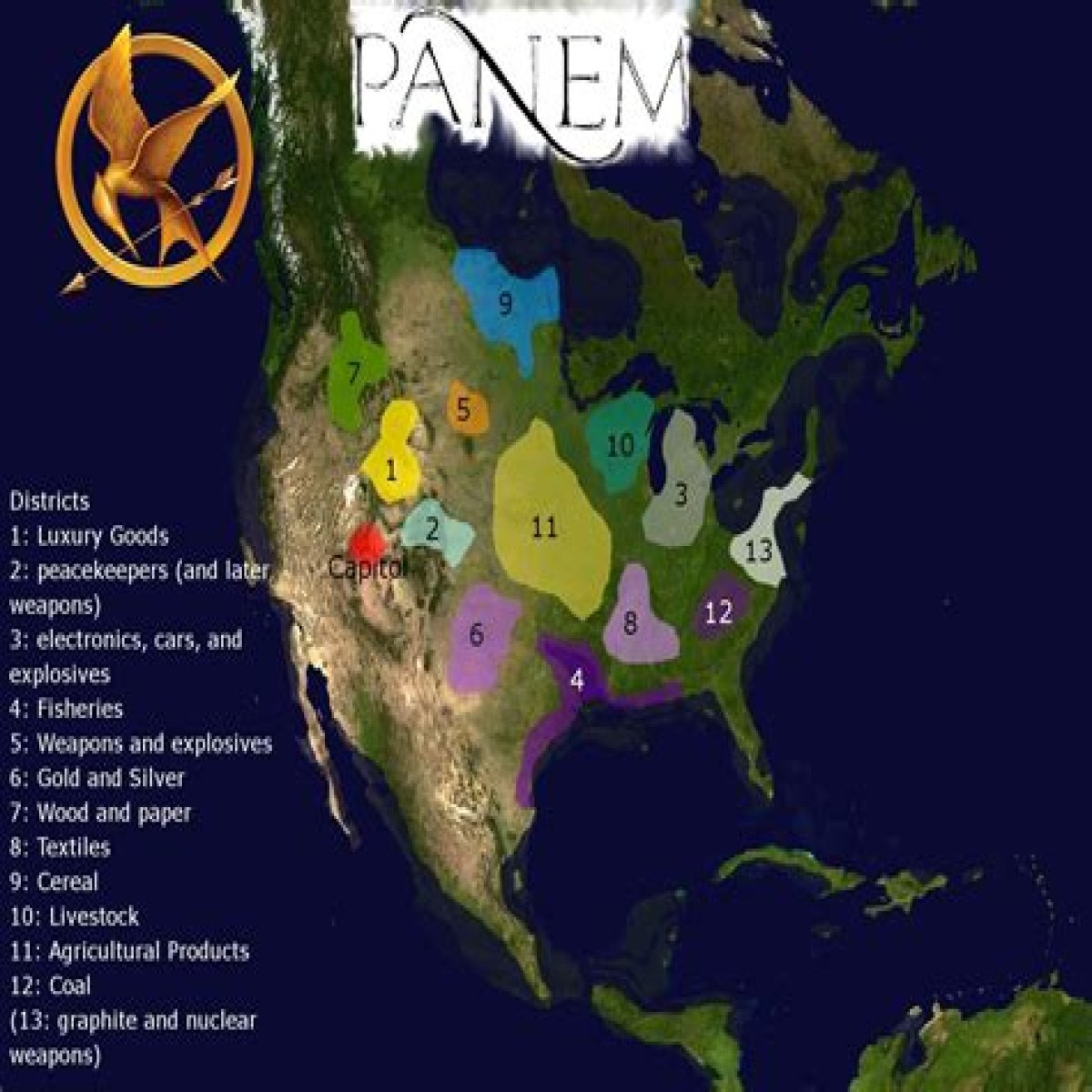The Hunger Games is a dystopian series that has captured the hearts of millions around the world. The intricate world-building, particularly the map of the districts, plays a crucial role in understanding the dynamics of power and survival in Panem. In this article, we will delve deep into the map of the districts in The Hunger Games, exploring each district's characteristics, significance, and how they relate to the narrative of the series.
Understanding the geography of Panem and its districts is essential for fans and newcomers alike. The map serves not only as a backdrop for the story but also as a reflection of the themes of oppression, rebellion, and survival. This comprehensive guide will provide you with an in-depth look at each district, their resources, and their role in the series, ensuring you have a complete understanding of the world Suzanne Collins has created.
By the end of this article, you will not only grasp the layout of Panem’s districts but also appreciate how each district contributes to the overarching narrative of The Hunger Games. Whether you are preparing for a re-read of the series or simply trying to enhance your knowledge, this article serves as a valuable resource.
- Table of Contents
- Overview of Panem
- The Districts of Panem
- District 1: Luxury Goods
- District 2: Masonry and Defense
- District 3: Technology
- District 4: Fishing
- District 5: Power
- District 6: Transportation
- District 7: Lumber
- District 8: Textiles
- District 9: Grain
- District 10: Livestock
- District 11: Agriculture
- District 12: Coal Mining
- Biography of The Hunger Games
- Conclusion
Table of Contents
Overview of Panem
Panem is a post-apocalyptic nation located in what was once North America. The government of Panem is divided into 12 districts and the Capitol, each with its unique resources and roles. The Capitol exercises strict control over the districts, a control that is symbolized through the annual Hunger Games, a brutal event designed to remind citizens of the Capitol's power and the consequences of rebellion.
The Districts of Panem
The map of the districts is not just a geographical representation; it is a narrative tool that highlights the disparities between the affluent Capitol and the impoverished districts. Here’s a detailed look at each district:
District 1: Luxury Goods
Known for producing luxury items such as jewelry and high-end products, District 1 is one of the wealthiest districts. The residents are often seen as loyal to the Capitol, and many become Career Tributes in the Hunger Games.
District 2: Masonry and Defense
District 2 specializes in stone production and military supplies. It is a stronghold for the Capitol, and its citizens are known for their combat skills, often serving as Peacekeepers.
District 3: Technology
This district is known for its technological innovations and production of electronics. The citizens of District 3 are skilled in engineering and programming, contributing significantly to the Capitol's tech advancements.
District 4: Fishing
Located near the coast, District 4 is known for its fishing industry. The residents are adept at swimming and fishing, making them formidable competitors in the Hunger Games.
District 5: Power
District 5 is responsible for the production of electricity and power sources. The citizens often face harsh working conditions, contributing to the overall struggle of the districts.
District 6: Transportation
Specializing in transportation, District 6 produces trains and other vehicles. This district often experiences a high level of drug abuse due to the stress of their work environment.
District 7: Lumber
District 7 is known for its timber and paper production. The citizens are skilled in logging and woodworking, although they live under the oppression of the Capitol.
District 8: Textiles
This district is responsible for the production of textiles and clothing. The working conditions here are grim, with many citizens being forced to work long hours.
District 9: Grain
District 9 primarily focuses on grain production, a vital resource for Panem. The citizens often face food shortages and harsh living conditions.
District 10: Livestock
Known for raising livestock, District 10 plays a crucial role in supplying meat to the Capitol. The residents often struggle with poverty and malnutrition.
District 11: Agriculture
District 11 is one of the largest agricultural producers in Panem, responsible for fruits and vegetables. The district is notorious for its brutal treatment of workers.
District 12: Coal Mining
The poorest of all districts, District 12, is known for coal mining. The harsh working conditions and poverty lead to a high number of tributes in the Hunger Games.
Biography of The Hunger Games
| Title | The Hunger Games |
|---|---|
| Author | Suzanne Collins |
| Published | 2008 |
| Genre | Dystopian, Science Fiction, Young Adult |
| Series | The Hunger Games Trilogy |
Conclusion
In conclusion, the map of the districts in The Hunger Games serves as a crucial element in understanding the social, economic, and political dynamics of Panem. Each district, with its unique characteristics and resources, plays a significant role in the overarching narrative of power and rebellion. As you revisit the series, remember the importance of these districts and how they contribute to the story's depth.
We encourage you to share your thoughts in the comments below, and don't forget to explore more articles on our site for deeper insights into The Hunger Games and other literary works.
Thank you for reading! We hope you found this guide informative and engaging. Be sure to return for more discussions and analyses on your favorite books!
Nicole Parker: The FBI's Rising Star In Crime InvestigationRussell Franke: A Comprehensive Look At The Life And Career Of A YouTube StarZelda Sykes: The Journey Of A Rising Star
